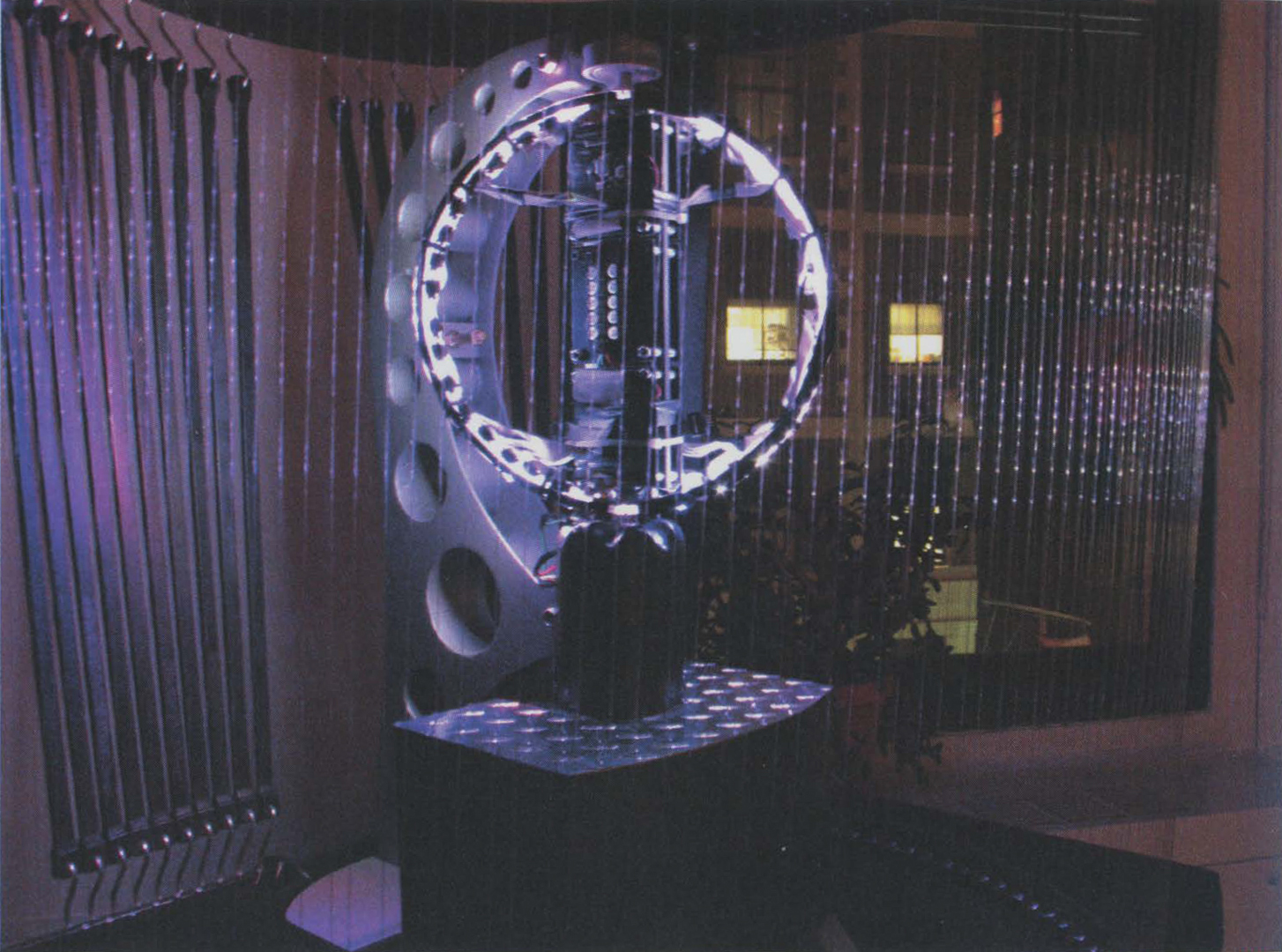James Nick Sears: The Orb
Artist(s):
Title:
- The Orb
Exhibition:
Creation Year:
- 2007
Category:
Artist Statement:
Inspired by a desire to push persistence-of-vision displays into the third dimension, The Orb is an attempt to bridge the worlds of art and design by creating a beautiful object of inherent interest that also functions as a platform for display. Having seen rather lowresolution attempts at three-dimensional cylindrical persistence of vision displays, I felt that concentrating a higher resolution on the surface of a spherical display would be of increased value, since the sphere has long held special significance as the shape of our home planet as well as many of the bodies we know and see in the sky. The Orb is a step toward re-establishing the relevance of the globe as spherical object for increasing viewers’ awareness and perspective on issues of worldwide significance, following in the footsteps of Buckminster Fuller’s Geoscope proposal in 1962, which called for a 200-foot-diameter sphere covered with 10 million computer-controlled light sources to be suspended over the East River in full view of the United Nations. By leveraging the efficiencies of persistence of vision, The Orb is able to produce about one quarter of one percent of the resolution of the Geoscope with less than one thousandth of one percent of the physical light sources. This efficiency will allow future iterations both to add full depth to the display and increase its scale.
Technical Information:
The Orb creates its imagery using 64 RGB LEDs spaced around
a 12-inch diameter ring. Each quadrant of this ring, consisting of 16 RGB LEDs, is controlled by a PIC microcontroller clocked at 40 MHz reading from its own independent stock of 8 MB of flash memory, which holds the bitmap data for the animations. Once per revolution, each microcontroller receives a position signal as the LEDs for which it is responsible pass by the rear of the piece.
This allows it to extrapolate the necessary timing information to maintain the persistence-of-vision illusion by controlling each individual red, green, and blue element throughout the course of the next revolution. This process repeats continuously as the apparatus revolves at approximately 1700 rpm (about 28 revolutions per second) at a speed of just over 60 miles per hour (nearly 100 kilometers per hour) at the equator.





